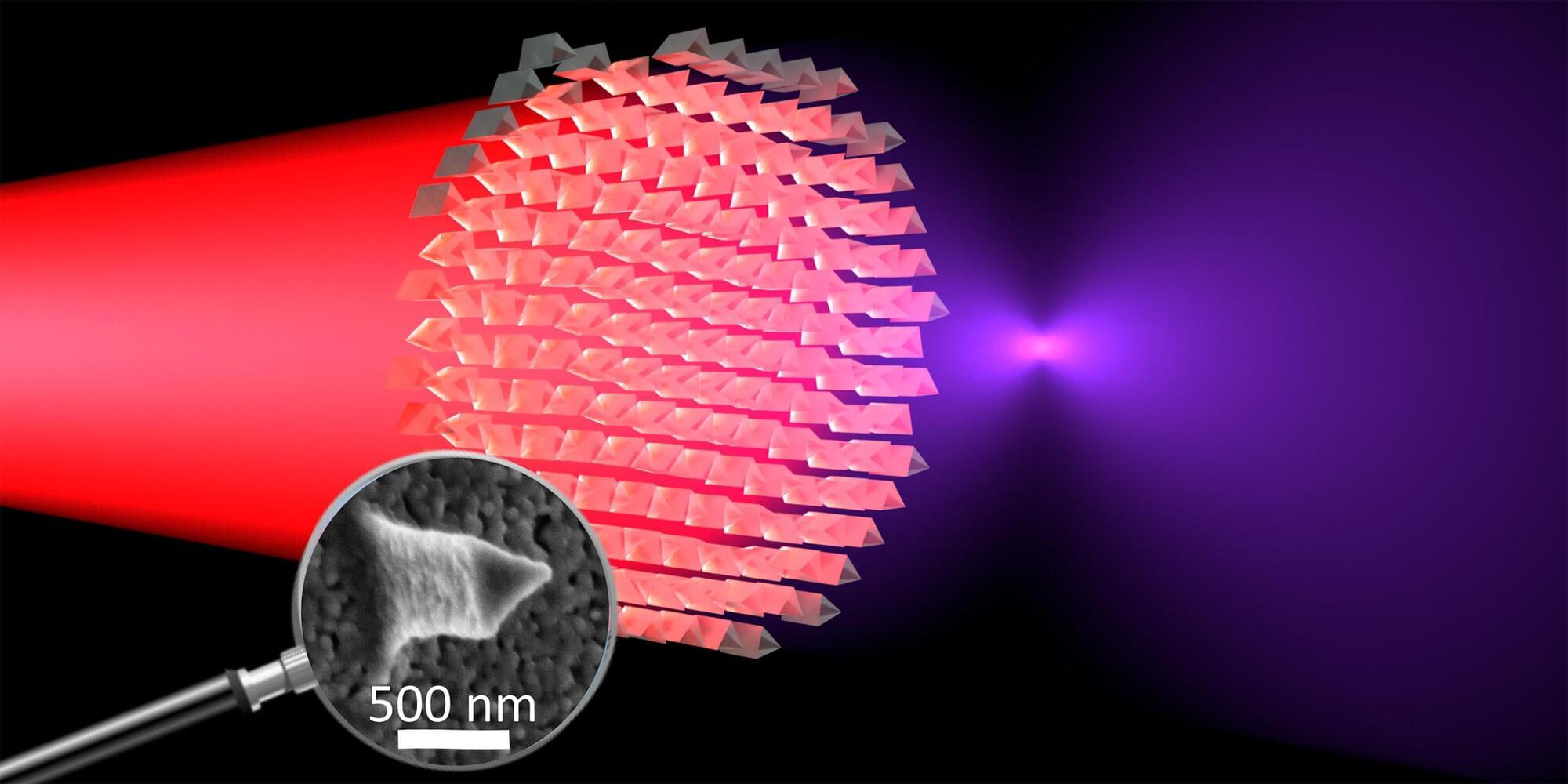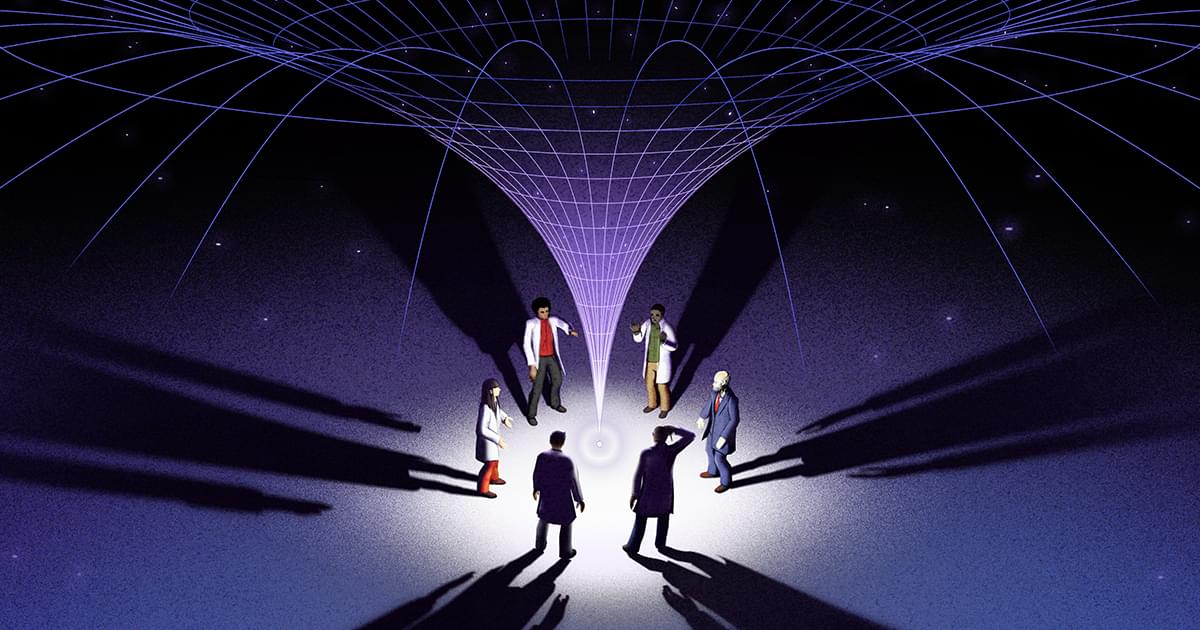Physicists at ETH Zurich have developed a lens that can transform infrared light into visible light by halving the wavelength of incident light. The study is published in Advanced Materials.
Lenses are the most widely used optical devices. Camera lenses or objectives, for example, produce a sharp photo or video by directing light at a focal point. The speed of evolution in the field of optics in recent decades is exemplified by the transformation of conventional bulky cameras into today’s compact smartphone cameras.
Even high-performance smartphone cameras still require a stack of lenses that often account for the thickest part of the phone. This size constraint is an inherent feature of classic lens design—a thick lens is crucial for bending light to capture a sharp image on the camera sensor.








